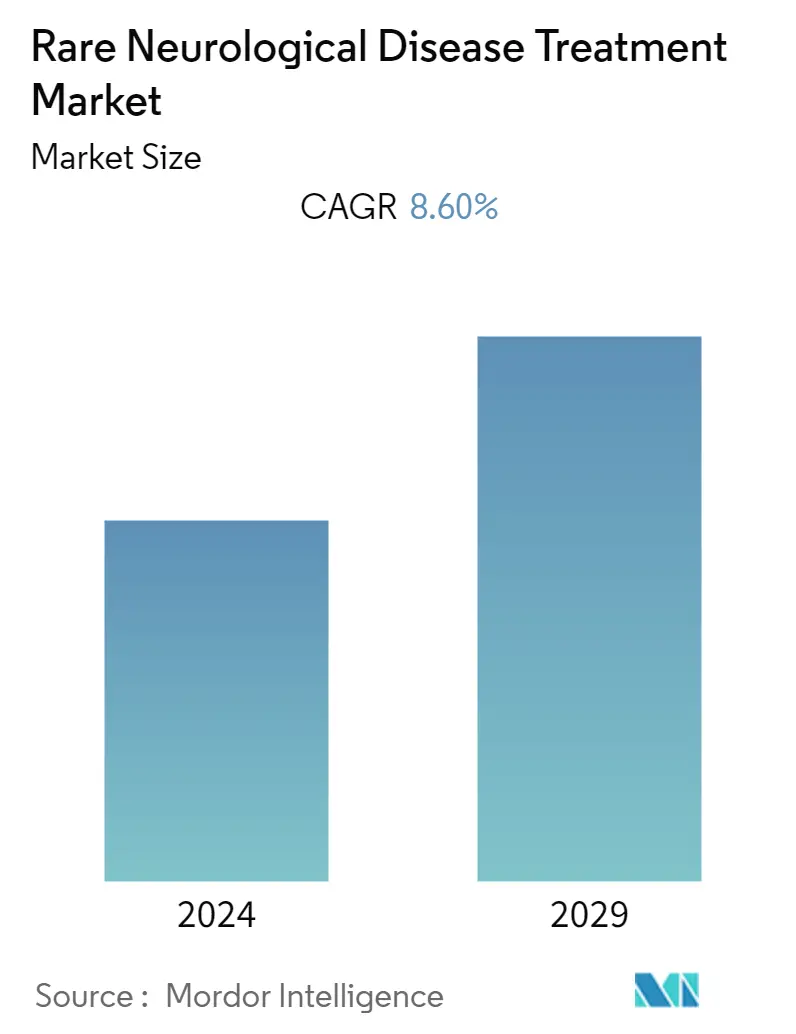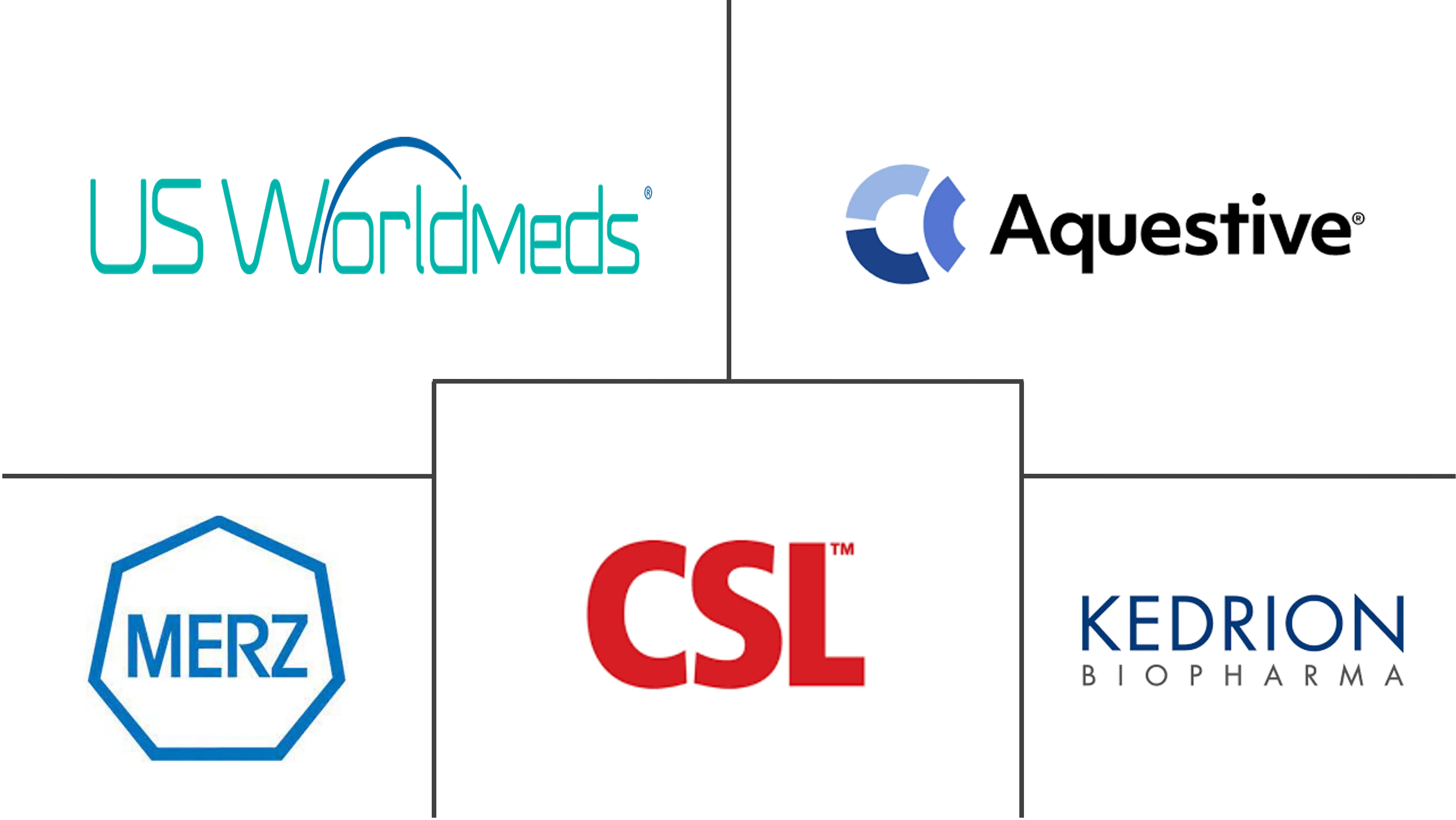Market Size of Rare Neurological Disease Treatment Industry

| Study Period | 2021 - 2029 |
| Base Year For Estimation | 2023 |
| Forecast Data Period | 2024 - 2029 |
| CAGR | 8.60 % |
| Fastest Growing Market | Asia-Pacific |
| Largest Market | North America |
Major Players
*Disclaimer: Major Players sorted in no particular order |
Need a report that reflects how COVID-19 has impacted this market and its growth?
Rare Neurological Disease Treatment Market Analysis
The Rare Neurological Disease Treatment Market is expected to register a CAGR of 8.6% during the forecast period.
COVID-19 had a profound impact on the rare neurological disease treatment market owing to the cancellations in elective procedures, including neurological treatment and diagnosis, which impacted the market. The clinical trials were also suspended due to the COVID-19 restrictions, which delayed the drug review and approval process. Some research articles reported the high prevalence of rare neurological diseases after taking COVID-19 vaccines. For instance, as per the study published in June 2021 in Nature Journal, the frequency of Guillain-Barre syndrome in India and England was estimated to be ten times greater than expected after taking the COVID-19 vaccine. However, the market started recovering since the restrictions were lifted and rare neurological disease treatments resumed.
In addition, the increasing prevalence of rare neurological diseases, promising pipeline drugs for the treatment of rare neurological disorders, and favorable government policies worldwide for speeding up diagnostic processes are actively affecting the growth of the studied market.
Some rare neurological diseases include amyotrophic lateral sclerosis (ALS), Duchenne muscular dystrophy, Vertical gaze palsy, and Huntington's disease, among others. As per the Orphanet report published in January 2022, the prevalence of chronic inflammatory demyelinating polyneuropathy is 3.7 per 100,000 individuals in Europe, and the prevalence of ALS is 3.85 worldwide and 5.2 in European Union (EU) in 2021. As per the same source, the prevalence of Huntington's disease is 12.0 in the EU in 2021. The high prevalence of rare neurological diseases is projected to boost the demand for their treatment, which is estimated to propel the launch of more drugs, and ultimately augment the market growth in the forecast period.
Furthermore, the strategic initiatives by key players, such as product launches, product approval, research studies, and partnerships, are expected to propel the market growth. For instance, in August 2021, Novartis announced the lift of a partial clinical trial hold and initiated a new, pivotal Phase 3 study of intrathecal OAV-101 in older patients with spinal muscular atrophy. Also, in January 2022, Novartis announced that the U.S. Court of Appeals for the Federal Circuit (CAFC) issued its decision upholding the validity of US Patent No. 9,187,405, covering a dosing regimen for Gilenya. The rising clinical trial activities and launches of drugs for rare neurological disease treatment are expected to propel the market growth during the forecast period.
Therefore, owing to the factors such as the rising burden of rare neurological diseases and demand for treatment of the diseases, rising clinical trial studies to develop a new intervention are expected to augment the market growth over the analysis period. However, the high cost of rare neurological disease treatment is expected to hinder the growth of the rare neurological disease treatment market.
